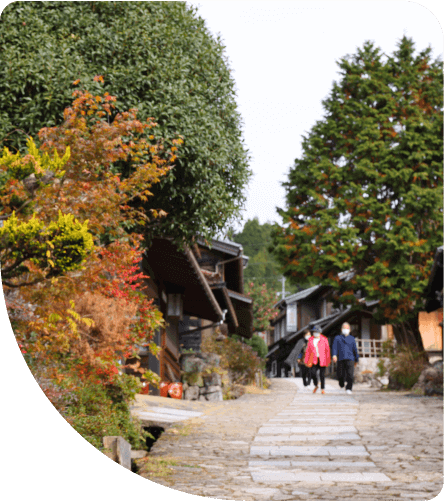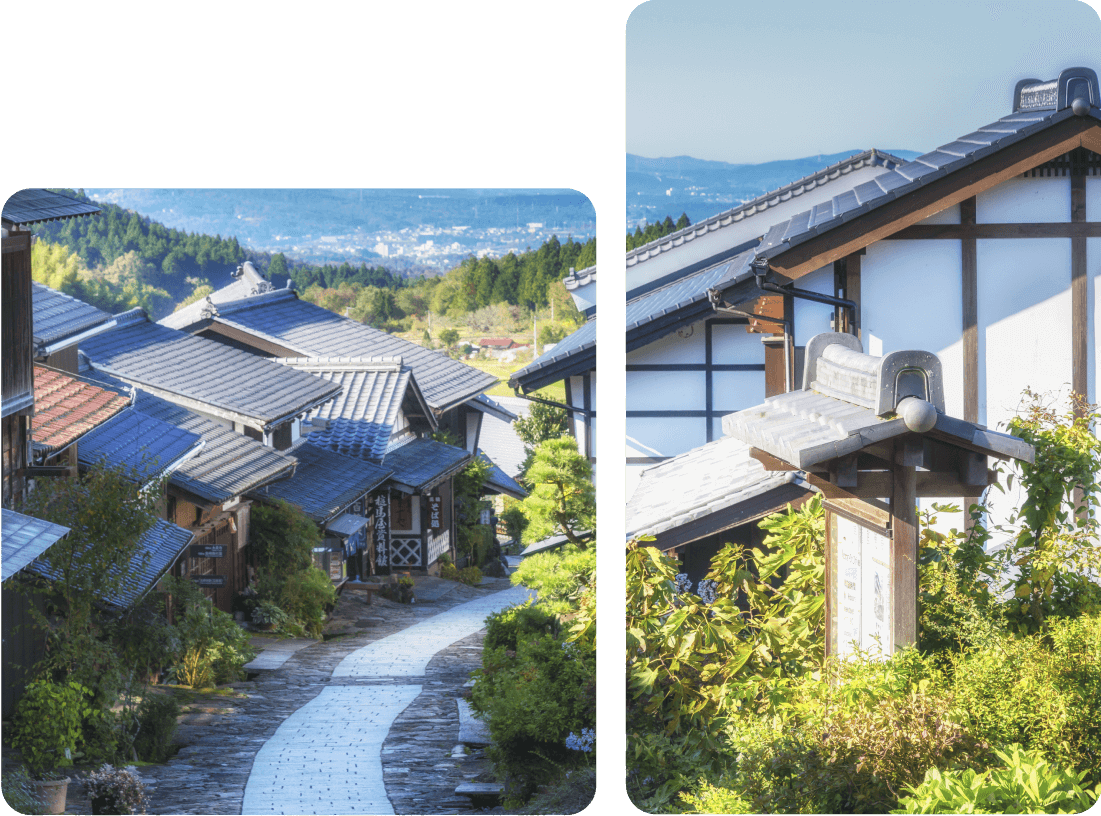About Magome

India (with 1.4 billion residents) The beautifully preserved post town of Magome in central Japan provides a test bed for our empathic design approach. Prosperous during the Edo period (1603-1868), Magome was restored in the late 1960’s, protected in the seventies. Magome does not have any power cables, there are no cars, it has historical houses and is busy with tourists as part of the Nakasendō trail.
In 2012, the distribution of population by age within Nakatsugawa City, in the district of Misaka, which Magome is part of, shows the highest concentration of a people above 65 years of age. Source
The prediction is a peak for the population of 65 years of age for 2040. Source
The Challenges for Magome
The seniority principle still plays an important role in Magome in guiding decision-making. Intergenerational communication is further complicated by a physical absence of the younger generation, who left the city in order to find education and job opportunities elsewhere.
As a result, the area is now confronted with many challenges related to:
-
Job opportunities

-
Mobility and communication infrastructure

-
Healthcare facilities

-
Sustainable tourism strategies

Unfortunately, the younger generation is excluded from discussions on city management, despite being the most interested party. This leaves any situational assessment and future development in the hands of a rapidly aging population in Magome that is failing to spur the revitalization of its city.
How we plan to solve the problem
We intend to assist the community in tackling these challenges by providing the smart city platform as a way to restore communication channels among the population and by introducing the empathic design approach to enable discussions on development opportunities for the city and its inhabitants. In the long term, this will allow Magome to develop a common goal for the community across generations and build an inclusive, self-governed, and economically prosperous environment for the population.
-
 STEP 1
STEP 1Development and deployment of the smart city platform
Our approach throughout this project relies on the concepts of user-centered design and user-driven development, which give the final user a fundamental role at every step of the conception, design, development, testing, deployment, and administration of the platform. The goal is to gather the user’s needs, ideas and opinions as the project unfolds to ensure the perenniality of the solution
-
 STEP 2
STEP 2Empathic Design Workshop
Opportunities of engagement, points of access, and further aspects of this project will then be fine tuned in a second step through an empathic design workshop with community members. During this step, we will identify the particular and most urgent needs of the community, and will guide the conceptualization of AI technology-based solutions to address them (including in terms of communication on the platform itself).
Community members would include all people concerned with the future of Magome including the younger generation many of whom may have left the community but are critical to involve when it comes to co-creating Magome’s future
-
 STEP 3
STEP 3Design and development of responses and proposals
The step will involve the design and development of responses and proposals to the issues identified in the previous step. In close discussion with local and external partners, we will start with providing concrete solutions to up to three issues in a User-Driven Development framework.
In accordance with the urgency and with the skills and interests of the involved partners, we will co-develop infrastructure and software in support of the AI technology-based solutions (limited to three for this project) selected by and for the community, which might include but are certainly not limited to introducing a 5G network, digitizing services, creating more job opportunities, and developing sustainable tourism practices.
-
 STEP 4
STEP 4Implementation of response proposals
Once final reviews and proofs of concepts have passed the approval of the community members through the communication platform, response proposals can then be implemented with the help of local community leaders as well as local and external stakeholders. The deployment will therefore mostly take place physically in Magome for the hardware installation and population training (technicians and / or users), while this might be accompanied by online configuration and seminars.
-
 STEP 5
STEP 5Continuous Monitoring
At the end of the project, we will ensure that the solutions are regularly assessed by the community so as to elicit further improvements or update over time to keep the solutions effective. The platform, notably, may become a central communication tool for the empathic design of future new solutions, as it may serve to federate future discussions by the community on such matters and more.
